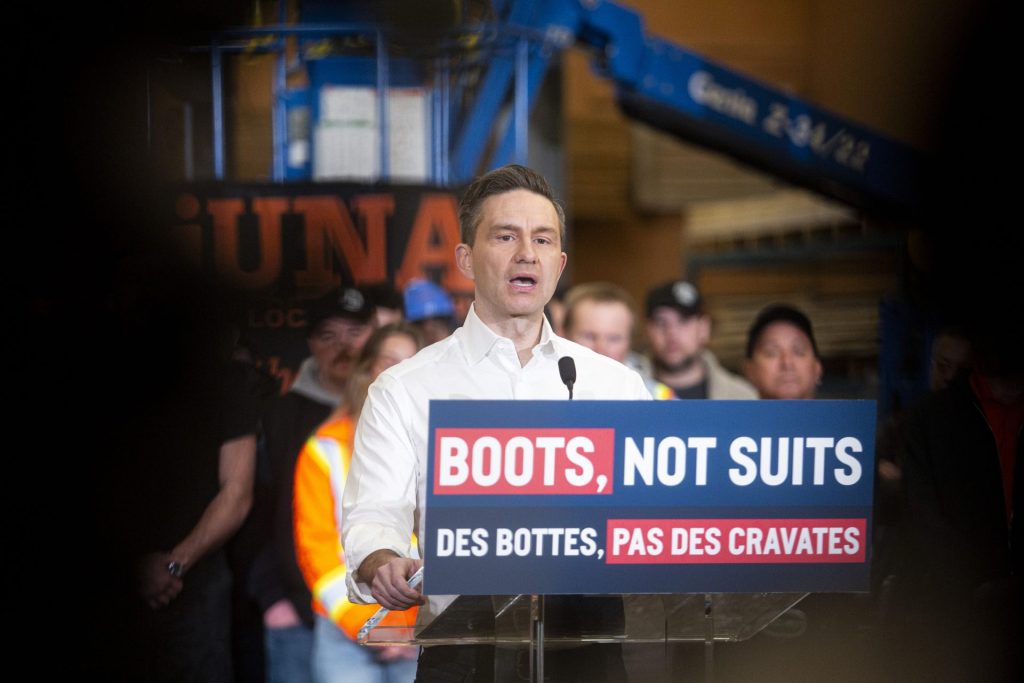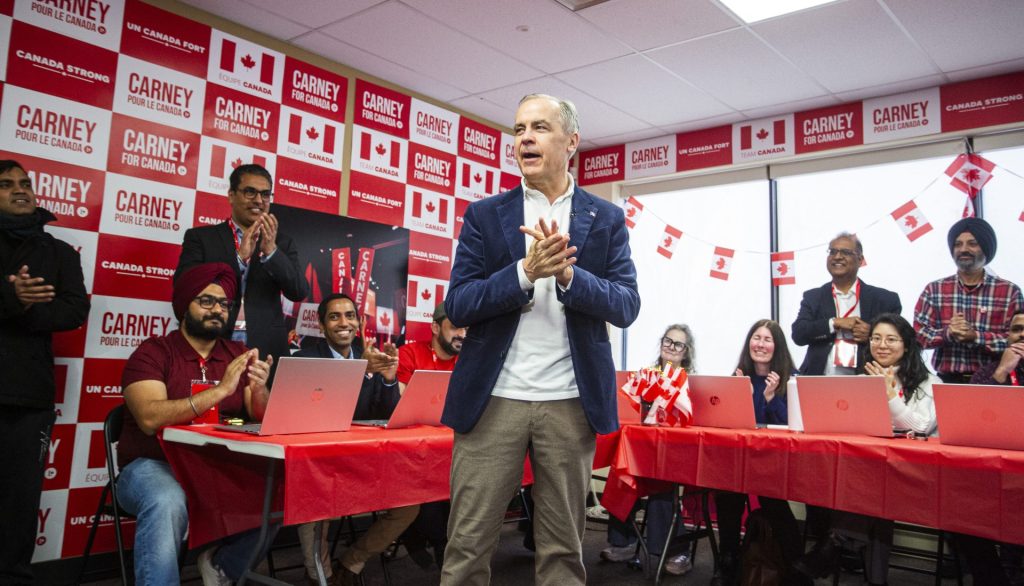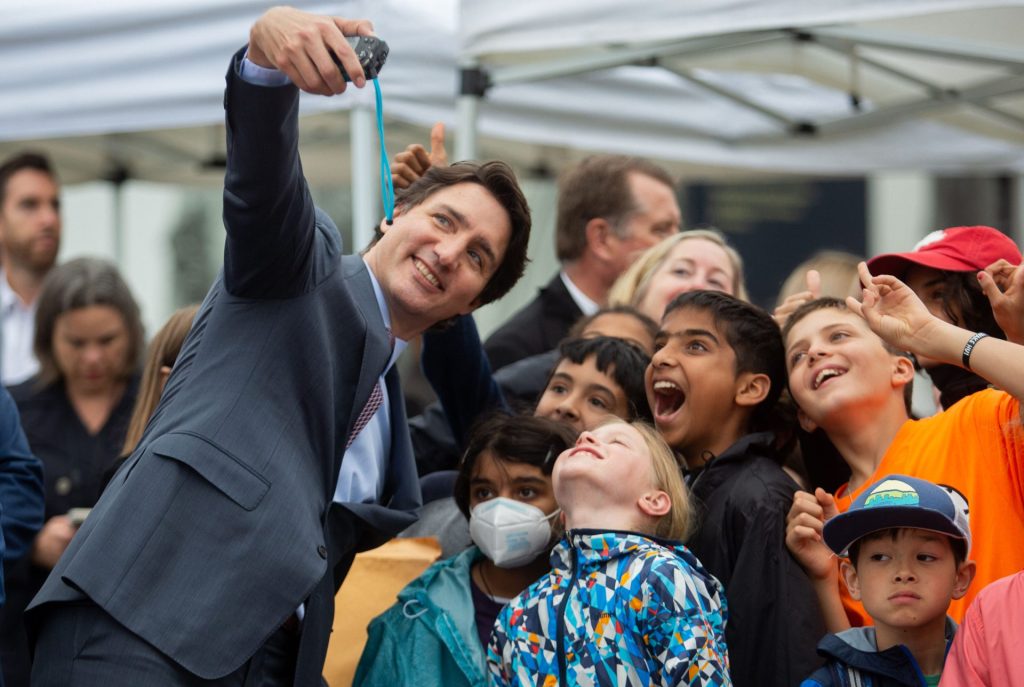Cost of living, housing the top priority for young voters, not Trump

Young voters’ top priorities are not being addressed by federal leaders most focused on proving their party is best equipped to tackle the Canada-U.S. trade war and sovereignty threats, observers say. While those issues are a main concern for middle-aged and older Canadians, they aren’t shared to the same degree among Canada’s youngest generation of voters, a recent Abacus Data poll reveals.
Generation Z—which Abacus classifies as voters under the age of 30—places cost of living as a top issue (46 per cent), followed by housing affordability (33 per cent), according to a survey tracking more than 3,200 respondents released on April 5. Dealing with U.S. President Donald Trump ranks a distant third in importance among 23 per cent—which amounts to a 15-point gap between generation Z and other voters polled, with baby boomers listing Trump as their top issue by a significant margin.
There are a few different reasons for this divide, experts say. One factor is that young voters, unlike older Canadians, have not experienced previous trade disagreements with the U.S., and therefore may be less motivated by trade threats, said Laura Stephenson, a political science professor at Western University and co-director of the Consortium on Electoral Democracy.
“The thing for young people is that they haven’t lived through these kind of crises in the past, whereas older people have,” she said. “[Older people] remember what happened with the Canada-U.S. Free Trade Agreement after 1988. They remember the adjustments after.”
The 1988 bilateral agreement phased out a number of barriers to free trade between Canada and the U.S. over a 10-year period, but was subject to criticism by those who were concerned the agreement could weaken the Canadian economy and result in job loss and dependency on the Americans. While the agreement resulted in increased trade, it had little impact on long-term cumulative earnings.
Affordability is also at the forefront of younger voters’ minds simply because their future is the most likely to be affected by the housing crisis and the uncertain job market. Many generation Z and millennial Canadians increasingly fear that home ownership is unattainable—yet 84 per cent still consider home ownership a priority, an August 2024 Royal LePage survey found.
Both the Conservatives and the Liberals plan to cut GST from the sale of some new housing. Conservative Leader Pierre Poilievre has promised to remove GST from all new homes under $1.3-million, whereas Liberal Leader and Prime Minister Mark Carney plans to remove the tax for all first-time homebuyers. The NDP is taking a different route—their pitch is low-interest public-backed mortgages.

On March 31, Carney also unveiled a housing plan aimed at doubling the number of housing developments built annually in Canada. The plan involves the creation of a new federal housing entity—Build Canada Homes—that would oversee the development of affordable housing and accelerate construction. The NDP has also committed to building more housing. NDP Leader Jagmeet Singh said he wants to build three million new homes by 2030 by training more skilled trades workers, speeding up construction, and incentivizing municipalities to build more.
“The cost of living hits everybody,” Stephenson said. “But for a young person starting out who’s thinking forward to their future, the idea that things are so rough—how are they going to be able to save for a house? And is a house even a realistic goal anymore? These kinds of frustrations, I think, are motivating them to a great extent.”
The patriotism divide
Patriotism is another dividing generational factor among Canadians, which may be skewing how different demographics perceive threats to Canadian sovereignty, Stephenson said. A February Angus Reid poll found a significant drop in the number of people “very proud” to be Canadian. The percentage tanked from 78 to 34 per cent comparing 1985 to 2024, but saw a rise to 44 per cent this past February as U.S. threats increased. As of the February updated figures, 53 per cent of respondents under the age of 35 said they were proud of their nationality, compared to the 81 per cent of those over the age of 55.
“Older people have a bit different attachment to Canada,” Stephenson explained. “I mean, coming for your sovereignty—if you have been a proud Canadian all your life, it’s different than for a young person who doesn’t have quite as much of an attachment. ”
One of the reasons for decreased patriotism can be traced back to the ideology espoused by the Trudeau Liberals, Stephenson said. In 2015, then-prime minister Justin Trudeau famously said Canada could be the “first postnational state,” saying “there is no core identity, no mainstream in Canada.” Many young Canadians grew up under Trudeau’s government, influenced by a perspective that national pride wasn’t “fundamental,” Stephenson noted.
“When you’re in a society like that, the challenge is that you lose a bit of pride in the nation. Without a clear identity, it would be unclear what people might be trying to stand for,” she said, making sovereignty less of a motivating factor at the ballot box for young people.
Though affordability remains a top concern for all ages, this election cycle has been dominated by the state of Canada-U.S. relations, meaning very few campaigns are addressing younger voters’ priorities—even if some policies may be beneficial to youth, said Elizabeth Goodyear-Grant, a professor of political studies at Queen’s University.

“The Liberals and Conservatives are promising to cut the tax rate on the lowest income bracket, which would result in nice savings, and youth disproportionately fall into that,” Goodyear-Grant said. “But even then, I don’t see it being framed or targeted towards youth in particular.”
Poilievre has promised to cut income tax by 15 per cent, including by bringing the lowest income bracket down from 15 per cent to 12.75 per cent. The Liberals have pledged a similar tax cut with their plan to reduce the marginal tax rate for the lowest income bracket by one per cent.
Lower voter turnout among young Canadians
The decision not to focus on engaging younger voters is partly strategic. Young Canadians tend to vote at a far lower rate, leading campaigns to often focus their efforts on the older voters they can count on to show up to the polls.
A notable exception to this was Trudeau’s 2015 election campaign, when the overall voter turnout for youth aged 18 to 24 was about 57 per cent—an 18-point rise compared to 2011. Trudeau’s success in mobilizing young voters has been widely remarked on, but the spike did not last. In 2019, turnout among youngest Canadians fell to around 54 per cent, dropping by a further 10 points to about 47 per cent in 2021. General voter turnout for each of these elections, on the other hand, was above 60 per cent.

Goodyear-Grant highlighted that even the Conservatives, who have been gaining support specifically among young men in previous years, have few campaign promises specifically geared towards them.
“They are obviously appealing to open doors—middle-aged and older—like relief on capital gains,” she said. “But how many young voters under the age of 29 are in the category of wondering what to do with their capital gains?”
The Conservatives have also promised to cut income taxes for seniors earning up to $34,000 a year. Julie Simmons, an associate professor of political science at the University of Guelph, said she thinks the plan showcases a lack of focus on the interests of young Canadians.
“He wants to give a tax break to senior citizens so that they have more money to spend on their grandchildren or to take a vacation,” Simmons said. “To me, that doesn’t demonstrate a lot of empathy for younger taxpayers who are paying for [Old Age Security] payments … through their taxes, and who are trying to make that down payment for that first house.”
Young people tend to be a more progressive voter base, yet 31 per cent of gen Z are polling for the Conservatives, according to an Abacus poll, with 35 per cent intending to vote Liberal, and 12 per cent intending to vote NDP. This is a much tighter race than among boomers—where Liberals are leading with 38 per cent of the vote—and could be attributed to the rise in support for the populist right, said Goodyear-Grant.
“The Conservatives have, over time, been doing a lot better among youth than has historically been true, especially with young men,” Goodyear-Grant said. “But it’s funny, I don’t see a lot in this platform that would actually speak to that demographic of voters. So, I don’t know if they’re just counting on or assuming the support of this group, or what.”
Young people ‘need to be at the table’
This is something Young Politicians of Canada—created to engage youth in politics—aims to change. Sixteen-year-old Jaden Braves, who founded the non-profit last year, released a report last week on young voters’ federal election priorities, urging politicians to take them seriously.
“We’re not seen as the demographic voter that’s needed to win an election,” Braves said at a Parliament Hill press conference.
The report listed 11 priorities, derived from roundtables and consultations held across Canada with almost 4,000 youth, including housing affordability, the climate crisis, unemployment and improved career opportunities. Braves said it is imperative—now more than ever—that young people use their voice and get involved in politics.
“It’s our future. The decisions that are being made today are going to have a larger impact tomorrow,” Braves said. “Young people need to get into these issues, make sure politicians are being held accountable, and make sure we’re actually at the table.”
The Hill Times
This story was updated on April 14, 2025, to include a graph on voter turnout.






 LICENSING
LICENSING PODCAST
PODCAST ALERTS
ALERTS













